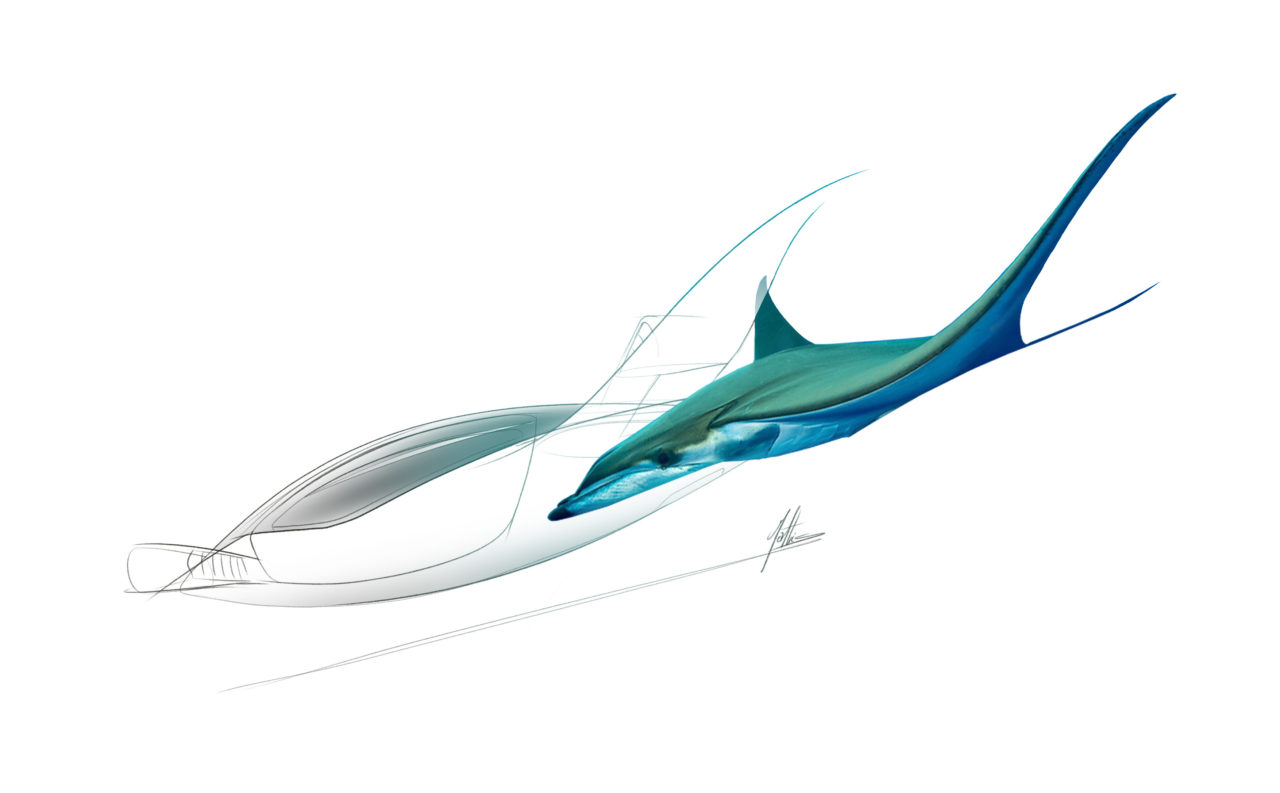
Concept sketch of the Lilium Jet next to a manta ray, signed by designer
Munich-based Lilium Jet was awarded the ‘Red Dot: Best of the Best’ design concept award for its sleek, manta ray-inspired five seat eVTOL.
“I believe biomimicry has a powerful role to play in design and a great deal of my inspiration came from the manta ray, one of nature’s most majestic creatures,” said designer Mathis Cosson, who was 23 when he designed the aircraft. “The way it glides almost magically through the water was something we wanted to emulate with the Lilium Jet, delivering a sense of calm elegance and minimalist design.”
Lilium’s five-seater, an expanded version of its original two-seat eVTOL design, was revealed to the public just two months ago. The company plans on building out an app-based platform for its air taxis to be ordered by customers in cities around the world.

Lilium describes its aircraft as an all electric tilt jet with 36 engines mounted on its flaps. Photo: Lilium Jet
“We are already in the certification process with both EASA and the FAA and we plan to achieve certification in time to allow us to be fully operational in several cities or regions around the world by 2025,” Lilium head of communications Oliver Walker-Jones told Avionics in an emailed statement.
When asked how the jet plans to meet the strict safety requirements laid out by EASA earlier this summer — including a catastrophic failure rate of 10-9 — Walker-Jones emphasized the design’s focus on redundancy and simplicity.
“We’re confident we can [meet those requirements],” he wrote to Avionics. “With a triple-redundant flight control computer, 36 engines and only one moving part in each engine, we believe our design is well set up to achieve these standards.”
 | Want more eVTOL and air taxi news? Sign up for our brand new e-letter, “The Skyport,” where every other week you’ll find the most important analysis and insider scoops from the urban air mobility world. |
Lilium also plans to keep fully-licensed commercial pilots on board initially, both to aid with public acceptance and ease the certification process.
“We expect the regulatory position won’t be there to support autonomous flight by the time we plan to enter service,” Walker-Jones said. “That said, we’d expect the aircraft to be capable of autonomous flight by that point. We could expect a phased move to autonomous flight over a period of time.”
Mark Moore, Uber’s director of aviation engineering, has expressed doubts about the jet’s design. Speaking at the Vertical Flight Society’s annual forum earlier this year, Moore said a vehicle will need to have low disc-loading during hover — below 12 lbs./ft.2 for open rotors and 25 lbs./ft.2 for closed rotors — and Lilium’s new five-seat design was “way over that.”
Lilium is confident in their design, however. The jet is designed to achieve a range of up to 186 miles in one hour, according to Walker-Jones.